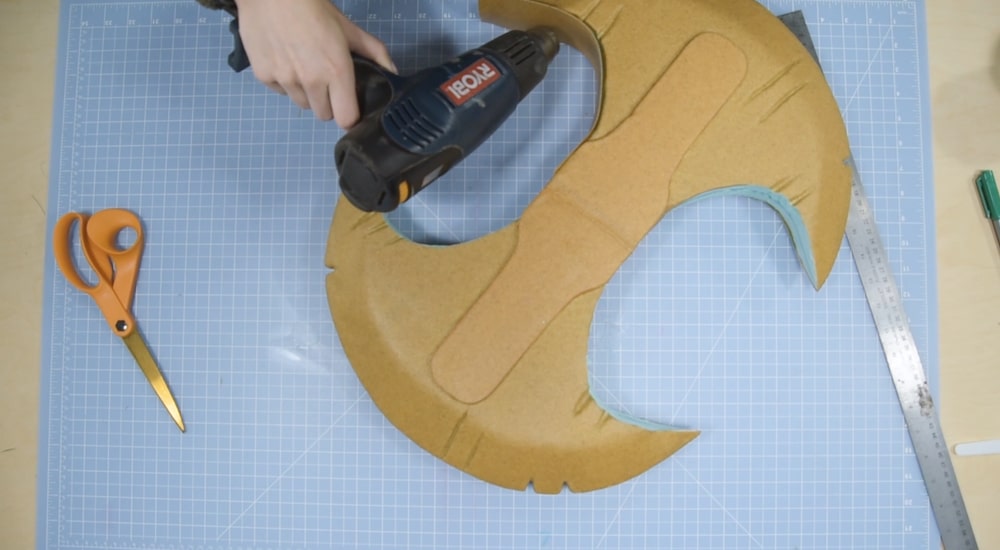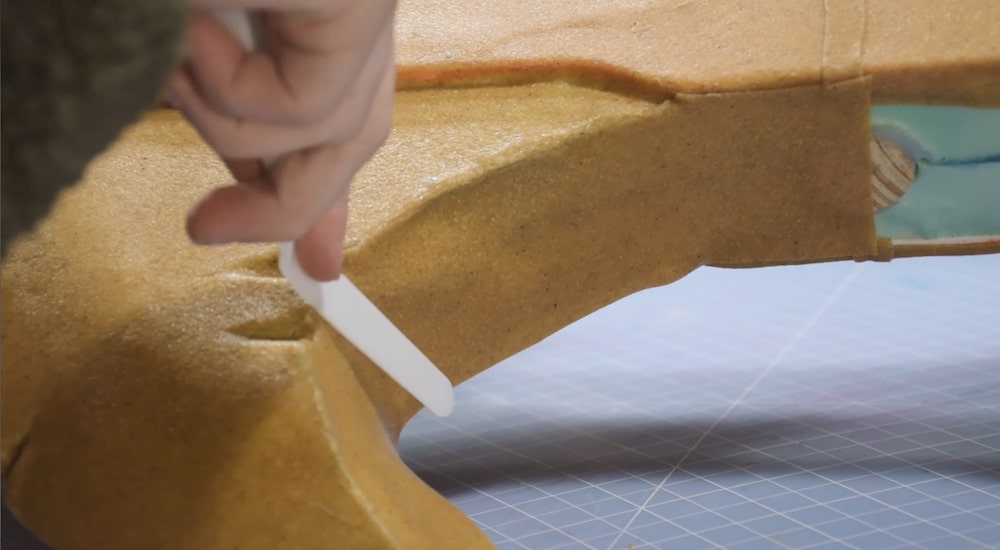With every new innovation in the industry, cosplay becomes more complex and exciting as an art form. However, some of the most pivotal cosplay innovations are the result of creative makers discovering useful product hacks and sharing them with the community. Case in point, just a few years ago, thermoplastics were used in shoe manufacturing and industrial applications. After a few cosplayers discovered its sculpting potential, several brands devoted to bringing different thermoplastics to the cosplay market quickly sprung up. Since then, thermoplastics have continued to growing in popularity among cosplayers, even becoming the number one material of choice for a lot of folks.
If you’re new to working with thermoplastics or you’re interested in learning more advanced sculpting skills, it’s actually a much more forgiving material than you might think. In this post, we’ll discuss the best uses for thermoplastics in cosplay as well as the benefits and challenges you’re likely to run into when building with it.
When to Use Thermoplastic in Cosplay
Thermoplastics come in a few different varieties for a few different cosplay purposes, but in general, they’re all plastics that can be heated and formed into whatever shape you desire. While some thermoplastics are available in pellet form, the most popular from for cosplay is usually thermoplastic sheets. When sculpted under a heat gun, thermoplastics can be molded into shapes, fitted to your body measurements, and attached to both itself and other materials in your cosplay build. Overall, thermoplastics can be used to either sculpt elements from scratch or to cover and reinforce objects you’ve already built. When applying heat, you can choose to either bend and stretch your thermoplastic over a mold or to a pattern, or you can press thermoplastic down over top of a base material to cover all of its edges and angles.
One of the best uses for thermoplastics in cosplay is for building complete sets of armor or armored costume elements that you can wear. While this tends to be considered a more advanced cosplay technique, thermoplastics can be used to create armor that’s incredibly strong, holds it shape, and can be fitted to your exact patterns and measurements. When primed and painted, thermoplastic does a great job of evoking the look of metal armor or other harder materials that would be more difficult and labor-intensive to actually sculpt with themselves.
Thermoplastic is also a good option for building and sculpting props and weapons. When you build with thermoplastics, you have the choice to either sculpt exclusively in thermoplastic or to cover foam, aluminum, wood, or another base material in order to build up its bulk and shape. When you do choose to cover your prop, especially when it’s made of something fragile like insulation foam, the thermoplastic will protect and practically travel-proof your prop or weapon against most serious damage.
Thermoplastics can also be used in smaller applications such as creating or reinforcing elements like shoes, helmets, and jewelry. If you’re comfortable sculpting in the medium and your cosplay requires accessory pieces like those, thermoplastic is certainly a viable choice, though some cosplayers would opt for foam or clay instead. It’s all up to your personal preference, budget, and what materials you have on hand.
Finally, thermoplastics are best used in applications where you’re looking to mimic the appearance and function of metal or glass. Clear thermoplastics are available, and those tend to work well for armor or weapons where you want to imitate glass, ice, or crystal elements. For projects where you want your cosplay to look like metal, thermoplastics behave much like metal once they’re molded and painted, so short of actually learning to blacksmith (though that is an option for some), thermoplastic may be your best choice if foam won’t do the trick for you.
Benefits of Thermoplastic
Cosplayers who are firmly based in the thermoplastics camp would agree that there are several advantages to working with such a strong and versatile material. Here are the benefits you should know about:
- Thermoplastic is one of the strongest materials you can easily sculpt with. When heated, its softens into an easily bendable and moldable form, but when it cools and hardens, thermoplastics hold their shape and remain rigid and durable.
- Thermoplastic comes in a few different forms and is available from a variety of brands a retailers, so you can choose the exact formulation that’s best for your cosplay. All the while, most thermoplastics are very similar to work with and won’t require learning all new skills to work with different brands.
- It’s paintable, so despite the base color you choose, you can paint your armor and props any color.
- It’s also reworkable. If you want to change something about your design or fix a mistake, all you need to do is reheat your thermoplastic and begin sculpting again.
- Many thermoplastics have a self-adhesive layer built right in to one side of the plastic sheet, meaning it’s easy to attach your thermoplastic to your base material. Thermoplastics have a high adhesive strength and can bond with itself and other materials easily.
- You can use every piece and scrap of your thermoplastic sheet to get the most out of the product. While scrap foam, fabric, etc. can often go to waste, you can heat and form together scraps of thermoplastic that you cut out to continue using in your build.
- Thermoplastic offers the opportunity to create realistic-looking armor and props that look and move like metal or glass, even more so than foam in many cases.
Thermoplastic Challenges

On the other hand, there are a few challenges to working with thermoplastics, as there are with any other cosplay material. While these trade-offs are usually considered worth the results, here are some of the major challenges of sculpting with thermoplastic:
- Thermoplastic can be on the more expensive side, as far as cosplay materials go. To build a full suit of armor or a large weapon or prop, you’ll likely need many sheets to sculpt with. Most thermoplastics have to be ordered online, so there are shipping costs to consider as well.
- Most thermoplastics start out with a rough raw texture that you’ll likely need to sand and prime down before painting. Unless you’re going for a pitted look, this can be a lengthy step that slows down your building process a bit.
- While thermoplastic won’t melt in the sun, high heats can reactivate the material and make it soften up. You absolutely cannot leave thermoplastic in a hot car.
- There’s a slight risk of burning your skin while working with hot thermoplastic. Most of this can be avoided by either running cold water over your skin or using tools to smooth and sculpt the material, but it is something you need to take into consideration.

- A suit of thermoplastic armor will be a lot heavier than foam.
- Thermoplastic can require a bit more sculpting practice than other materials. Instead of carving an object out of clay or foam, for example, thermoplastic sculpting is more about adding on elements instead of subtracting them to create your form.
- In order to keep costs down and create the shape you’re going for, you’ll need to practice layering your thermoplastic over some kind of filler material. This process is pretty unique to the thermoplastic material, so it may take cosplayers some practice to master as well.
Armor Up with Thermoplastics
When you don’t have a full metalworking set up (or the skills to know where to even start with metal), it’s easy to think that your only option for smithing armor is with foam. While there are plenty of reasons why many cosplayers love working with foam, others have discovered that thermoplastics offer the handling and results they’re looking for in their armor and weapon builds. While it may seem intimidating at first, thermoplastic is actually a fairly forgiving material that only takes a little practice to get used to. Neither thermoplastic nor foam are “better” than the other, and neither make you a “real” cosplayer. It’s all up to how you like to build your armor and what fits your character design and vision. Whichever you choose, you can armor up for the next convention or event with a stunning level of accuracy to your character.